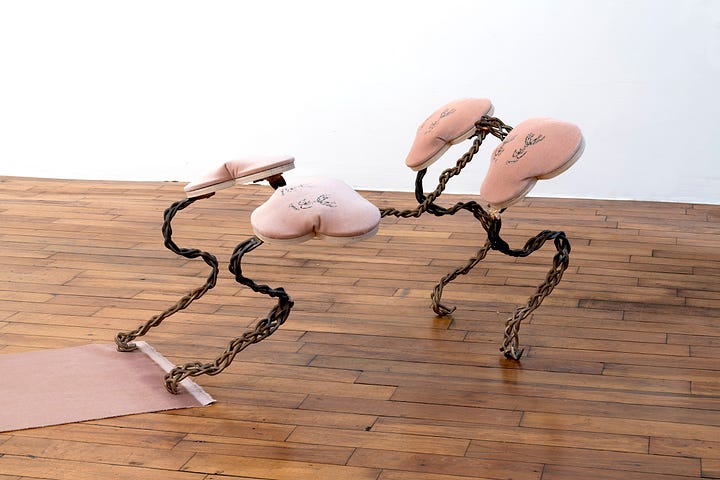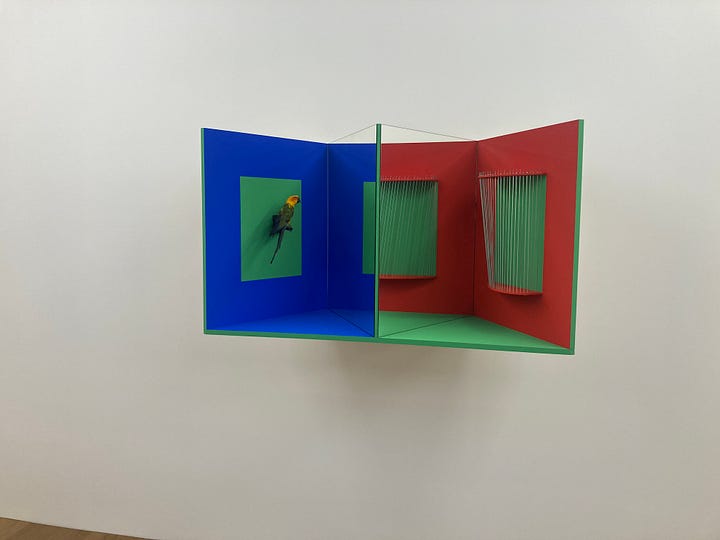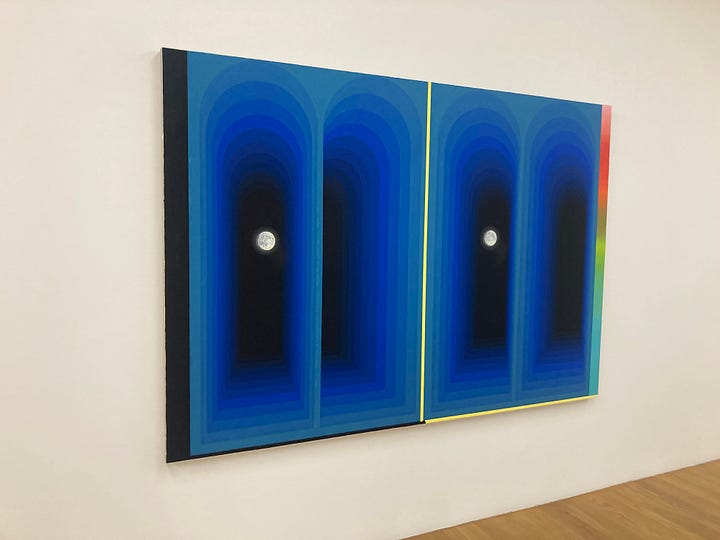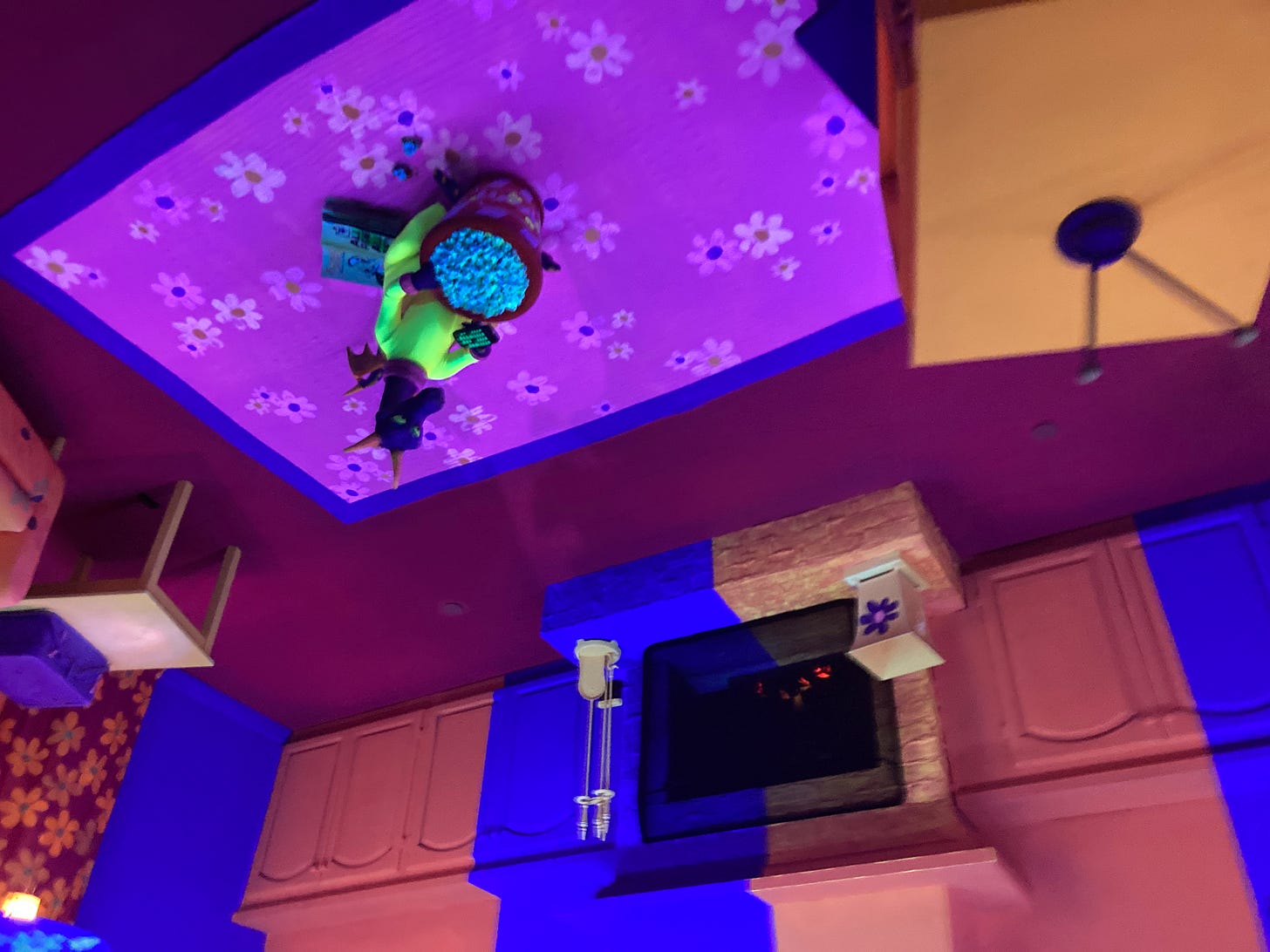I find myself often thinking about lost audiences. Dhalgren was sold in airports. Someone living what might be thought of as ordinarily life could hear about it, get it, and go somewhere extraordinary with the work.
It worries me that an audience for any book now could be limited to people who themselves want to write books; attendees of an art exhibition are often people who themselves want to make art. I don't have hard numbers on this but I sense it. Instead of expansion and beaming work progressively out beyond the vanishing point, growth as an artist can feel like entering bigger and bigger echoing hallways.
Television, the prestige-y sort, fills this void somewhat. There is the broadly shared experience of HBO Sunday nights. Most of us can enjoy The Last of Us without scheming of ways to produce something like it ourselves—maybe because the challenge is obviously next impossible. I don't know enough about contemporary music to say whether that is still the case. But with art and books, it feels unusual to meet readers who appreciate the work for what it is: people who don't necessarily have interest in making or producing work themselves. It could be cultural institutions that have given up on trying to reach audiences beyond a party circuit; a niche that might feel like—when you are in the thick of it—that it is the entire thinking, breathing, art-appreciating world. But it could be a lot of things.
The role of the critic is another wrinkle here. Because someone with the exact and perfectly right opinions on music or film and can also...generate content off it (to use a coinage I don't like but can't really think of another way to put it). Another wrinkle here is that the internet—and creating culture through the internet—collapses boundaries between writer and editor and reader in a way that can lead to access points for people who wouldn't otherwise get a shot through traditional channels.
Maybe I'm still not explaining this well but when I think about lost audiences I think about being in high school and listening to the college radio from Bridgewater State College or Stonehill. There were no DJ personalities. Just music that was good and rare. Someone was probably spinning their own CD collection. And I got exposed to music that I wouldn't otherwise hear. I could listen to this music in the suburbs, I could sit on the floor and read Burroughs and Ballard novels at Borders in the suburbs. I could, myself, live what might be considered an ordinary life, while loving the culture that I do—I could find it, it was there. I didn’t need to know the right words to enter into a search engine.
Who were those DJs and where are they now? High school teachers, warehouse workers, veterinarians, office managers, accountants? I don't know. The people I'll never know who were spinning Spacemen 3 or Helium on state college radio stations that I heard one night out driving at midnight that was now a long time ago: yes, that's who I write for...that's why I'm here, and why when it's hard, I am stubborn to stick around. I got the signal from them, when I needed it; how do I send a signal back? What makes the cultural spaces I’ve gained access to such closed loops and how does one break out without giving up?


My attempt to answer these questions comes in a piece I wrote for Dissent magazine with the support of the Economic Hardship Reporting Project. It's a profile of two brilliant artists, Brittni Ann Harvey and Harry Gould Harvey IV, and their art space, the Fall River Museum of Contemporary Art.
The piece is finally out from the paywall. Please read! If you like this newsletter, you will like this piece.
#
My friend Julian Hoeber’s exhibition just opened up at Blum & Poe and it's so good it made me laugh. The work is fun. It’s a word I almost never use in an art context. But it’s fun! I love the rich colors and play on stereoscopic vision.




There’s also a great survey of Bridget Riley’s work at the Hammer. The show is installed in a clever way. There’s a room in the center of the gallery with Riley’s student work—typical art student paintings. But in this room, there are cuts in the walls, so you can see between Riley’s student paintings, glimmers of the rest of her work—the paintings that were soon to come, it underscores her potential that was always there. At about the age of thirty, she completely stopped producing traditional paintings. She transformed as an artist, and only painted “op-art” from that point on. And at the about the age of forty, she transformed again and introduced color into her work. I hadn’t realized how all-encompassing the chrysalis had been for her and I found it inspiring. I want to go back. I sort of rushed through it because I had several minutes to kill before meeting someone.
#
At another gallery, I found this newsletter. I took a seat and read the whole thing.
….how could I not? Found this fascinating interview with the writer, Sasha Pearl.
There have been a few newsletters I've written in my mind in the past several months but couldn’t find the time to send. Like how I spent Thanksgiving at Epcot with my sister and it really was exactly like I remember when I was six years old—Figment!!—but like, all janky and falling apart.
It’s really a magical place. Like the magical thinking required to believe that some five year old child, born in 2018, could possibly care about Buckminster Fuller or “The World of Tomorrow” as it appeared in 1955 or 1985—I think even then, it wasn’t clear when exactly the imagineering took place or what year was the future ideal. Spaceship Earth is the highlight, of course, because the lighting is so good that even these janky forty year old animatronics appear somewhat lifelike.
I also thought about writing about the X-Files again. I won't, but I still think "I want to want to believe" is a good title which is why I'm going with it.
Here’s something else I wrote: WPO. It’s a short story that appears in the Terraform anthology of science fiction. (Since then, I found a Suluki rescue page that hasn't been updated since...2006).
#
65 is the best movie I’ve seen in months because I haven’t bothered seeing movies in the theater in months. But if there were movies released like this every week, I would go every week. I did love it. It feels like a 21st century spin on the mid-century sci-fi thrilling adventure tale. It is, unexpectedly, very The Incredible Shrinking Man (because Adam Driver is wittle and the dinosaurs he wrestles are sooOOO BIG!)
##
I also had some messy notes to further explain my last newsletter. Maybe this is helpful to share? More of what I’m thinking about these days:
Integrity —that’s the self you bring to the project
Conviction —that’s belief in the project
High conviction, low integrity — belief in it for reasons outside of you; maybe you are convinced it is good for your career
Low conviction, high integrity - being yourself in a project, despite not believing in the purpose to the project
Again, raw notes. Every artist knows there’s a difference between cheating at cards (because the outcome of success is valued more than the process to get there) versus playing to experience chance and making yourself vulnerable to all elements of chance. People decide to put themselves in the work, or hide from it; and any reward you can possibly reap from it depends on the path that you take.
Anyway…
Thanks for reading




